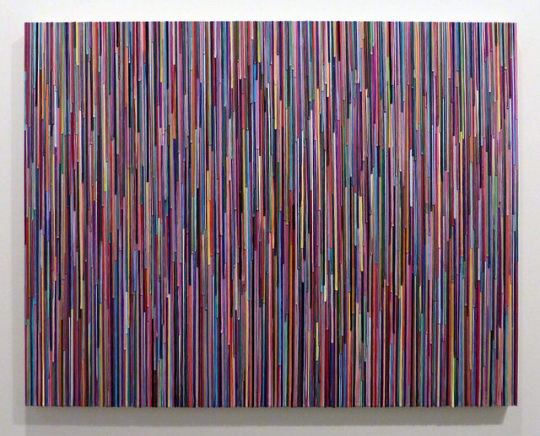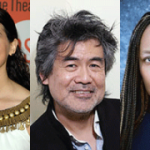Creative Careers: Resources for Teaching Artists
As a teaching artist, it’s important to participate in professional development workshops and seek new opportunities.
The Association of Teaching Artists describes a teaching artist as “a practicing professional artist with the complementary skills and sensibilities of an educator, who engages people in learning experiences in, through, and about the arts.”
Teaching artists play a vital part of the creative development of people of all ages, enriching their day-to-day educational experiences. They help promote innovative techniques in the classroom, foster the artistic talents of students and teach the importance of collaboration. As a teaching artist, it’s important to participate in professional development workshops and seek out new opportunities. In-classroom training, along with networking in the field, can help you develop greater effectiveness as an educator and build your artistry. We’ve pulled together a list of resources from NYFA Source that offer teaching artists professional development training, curriculum resources and highlight art education initiatives. Before delving into the resources, here is a quick overview on how to search NYFA Source.
How to use NYFA Source
In NYFA Source there are several types of Awards or Services for teaching artists. To locate a variety of useful programs following the directions below:
- Click here visit the Search page
- Select the Discipline category “Arts-Related Professions”
- Select the sub-discipline “Teaching Artist/Arts Educator
It’s helpful to filter your search by geography as well. Some of the most popular teaching artists services include arts-in-education rosters, curriculum resources, and community-based programs. By following these steps, teaching artists can find relevant information and opportunities for teaching artists. First up, how to add your name to an artist roster.
Are you familiar with Artist Rosters?
An Artist Roster or Teaching Artist directory is an online listing of professional artists from various disciplines who are qualified to teach art education programs. The lists can be expansive, including all artistic disciplines, including music, theater, visual artists and literature. Local schools districts often use rosters to find teaching artists to join their communities.
Artist roster applications vary and you should contact your local arts council for additional information regarding the process. (Re-visit our blog post on how to use your arts council for local tips!) In most cases, artists who apply for inclusion on the roster must pass a panel review.
Select Artist Rosters & Teaching Directories
Mississippi Arts Commission
Artist Rosters
Nebraska Arts Council
Artist Directory
Washington State Arts Commission
Teaching Artist Roster
The Brooklyn Arts Council
Arts in Education Roster
Teaching Artists Residencies
If you interested in developing your pedagogy or need help getting your start in art education, there are residencies you can join nationwide. Here are two New York examples:
- The Young Audiences New York residency program allows for daily collaboration between teaching artists and educators. Typically, the residency programs consist of a series of interactive workshops, each specifically designed for students ranging from pre-K to 12th grade. Artist may add live performance or class field trips to expand the creative learning experience. Click here to learn more about their Teaching Artist application.
- The Community Word Project offers a Teaching Artist Training program in New York City. The exclusive program includes curriculum and supervised on-the-job training with established classroom teachers.
Regional Teaching Artist Organizations
- Seattle Teaching Artist Network (STAN) is a community for Seattle-based teaching artists of all creative backgrounds. The community-oriented network shares professional development opportunities, job openings, and hosts monthly networking events. Join the active Facebook group to learn more about the organization.
- Teaching Artist Support Collaborative (TASC) of California offers members an active list of professional development resources, including after-school programs, community workshops, and classroom partnerships with educators. Learn more about membership.
- The Rhode Island Teaching Artists Center (RITAC) connects Rhode Island-based teaching artists with job opportunities, professional development workshops and online resources. Learn more about their annual teaching artist application.
- Join the NYC Arts in Education Roundtable to expand your professional network and to meet thoughtful individuals who are looking to make connections. As a teaching artist, networking can offer you many benefits in both your personal and professional life. You may find yourself engaged in a conversation about the future of art education, curriculum planning, or prospective job listings. Get membership information for the NYC Arts in Education Roundtable.
Artist-Led Learning
Art education programs are designed to empower students and strengthen the role of the arts in educational settings. Often teaching artists are based in a school or presenting arts organizations where they help develop programs and foster creative participation. Teaching artists help traditional educators link curriculum areas to specific art form like theater, music and literary arts. Here are few examples of artist-led programs:
- Educators participate in workshops lead by teaching artists at the Manhattan Theatre Club.
- The Acadiana Center for the Arts has a teaching artist program that supports creative learning in music, creative writing, and visual arts.
- The Just Buffalo Literary Center host creative writing workshops where professional writers develop curriculum and participate in theme-based residencies.
- Theatre for a New Audience’s The Voices Project teaches students how to create original plays.
Advocacy Resources
- Arts Education Partnership is a national coalition of education, arts, business, and cultural and philanthropic organizations. The organization advocates for inclusive arts education programs in every classroom. Their initiatives include National Arts in Education Week and ArtsEdSearch, a policy database focused entirely on student and educator outcomes associated with arts education. Learn more about their advocacy resources for teaching artists.
- The National Art Education Foundation (NAEF) supports the efforts of art educators nationwide and administers various grants programs, including the Teacher Incentive Grant.
- Teachers & Writers Collaborative (T&W) publishes Teachers & Writers Magazine as a resource for teaching the art of writing in kindergarten through college and in non-classroom settings. The online magazine presents a wide range of ideas and approaches, as well as lively explorations of T&W’s mission: “educating the imagination.”
- Association of Teaching Artists (ATA) non-profit advocacy organization that provides professional development resources for emerging and established teaching artists.
The profession of the teaching artist is vital to the growth of all students. At every academic stage, integrating teaching artists into educational settings help students embrace learning. Teaching artists seamlessly adds creative standards, build connections and helps improve academic rigor. In addition, teachers can discover new tools for classroom engagement. Do your research and learn how your background in the arts can make a difference.
To find more opportunities for teaching artists on NYFA Source, a free searchable database of 12,000+ awards, residencies, and services.
– Glory Edim, Program Associate, Online Resources
Image: Omar Chacon (Fellow in Painting ‘08)





